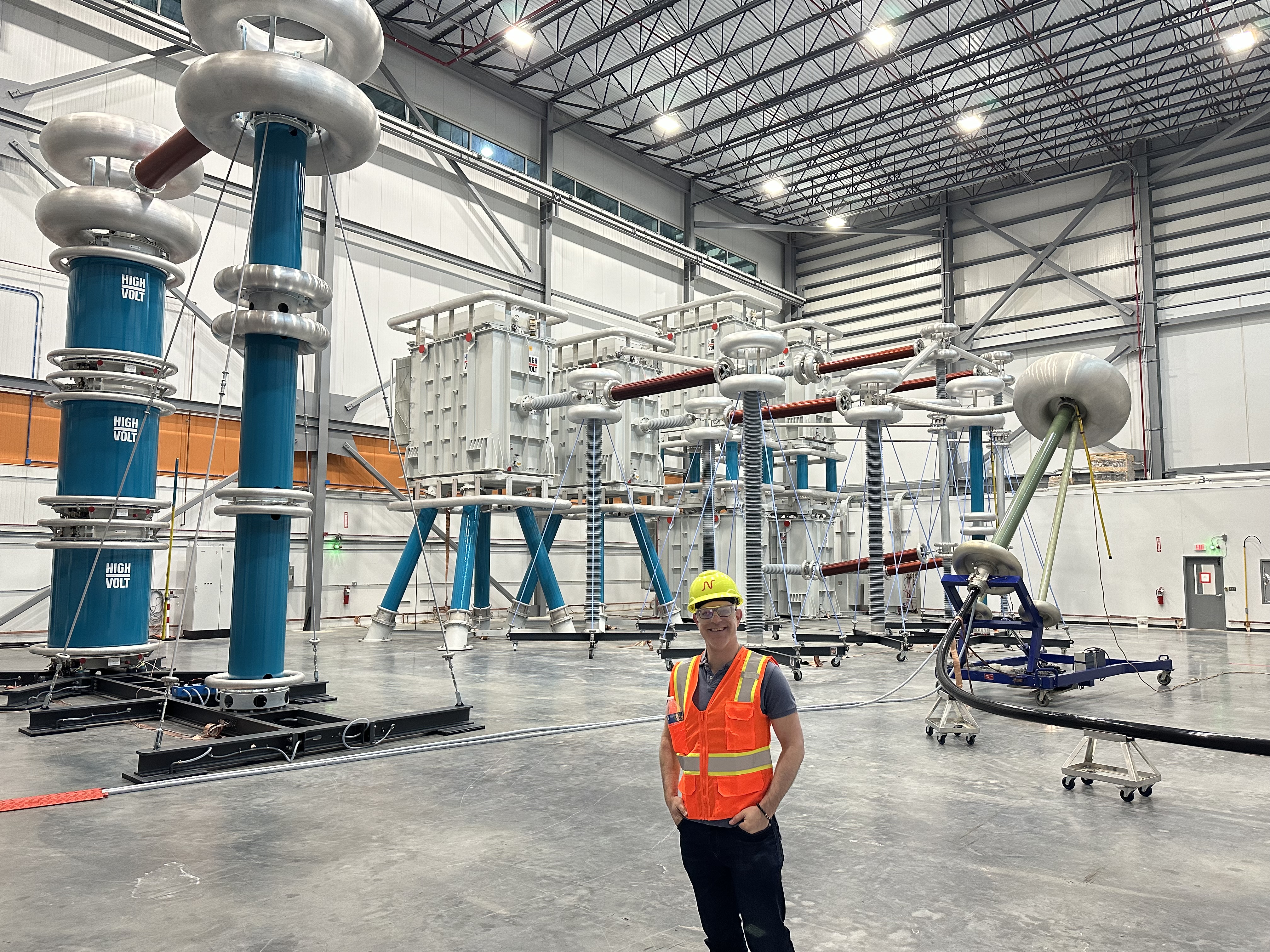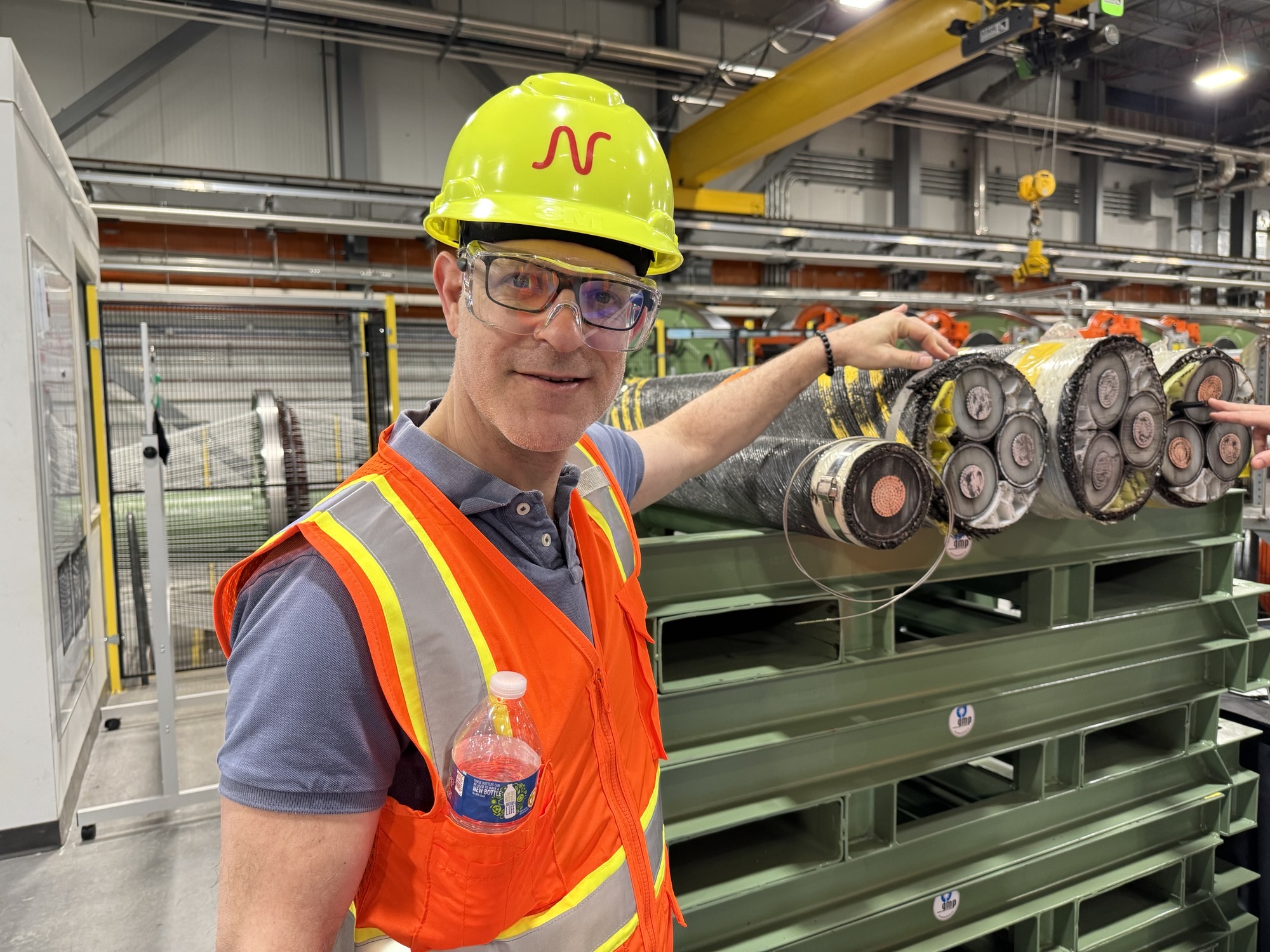JH Explorer in Charleston: Power cabling the energy transition
During a research trip to the US, Portfolio Manager Tal Lomnitzer spends some time at a high-end cable manufacturer – a company that is vital for the transmission of clean energy from production to consumption points.

3 minute read
Key takeaways:
- The electric cable industry is benefiting from an unprecedented wave of demand to build offshore wind farms and electricity grid infrastructure, and also from supply bottlenecks.
- The high-end cable market is highly specialised, with complicated manufacturing, transport and cable laying processes.
- Cable manufacturers are just one example of companies that are leveraging their expertise and are developing technologies to enable and benefit from the global energy transition.
| The JH Explorer series follows our investment teams across the globe and shares their on-the-ground research at a country and company level. |
Ever wondered how the clean green electrons generated at offshore wind farms find their way onshore? I recently visited historic and picturesque Charleston in South Carolina to see Nexans’ electricity cable-making facility. My due diligence site visits often focus on the extraction and processing of copper, but we also invest in companies using that copper to make products to enable electrification and decarbonisation. In the case of Nexans, that copper and aluminium is utilised to make high voltage cables to transmit electrons from where they are generated to where they are needed.
The electric cable industry is dominated by companies such as Nexans, Prysmian and NKT. This industry is benefiting from an unprecedented wave of demand and bottlenecks in supply chains, as offshore wind farm developers and electricity grid infrastructure companies are racing to build out new capacity and strengthen grids.

The Nexans facility is truly impressive and this made me realise just how tough it is to break into the high-end cable market. It is really complicated and difficult to make these high voltage wires and even trickier to load the immensely heavy spools of cable onto specially constructed vessels and then lay them in tough offshore environments without damaging them.
Nexans also allowed us into their seemingly space-age cable testing centre, where lightning strikes can be simulated, cables are tested for tiny levels of current leakage, or sufficient voltage is generated to take cables to their failure limits.

Charleston is known for its charming architecture and vibrant culture, its role in the American Revolution and Civil War, and for being a hub for agriculture and trade, given its position at the confluence of two major tidal rivers. The city has played an integral part in shaping the US. With highly sought-after cables made by Nexans, it may also play a future role in enabling the development of renewable energy projects and electricity grid networks, not just in the US but in Europe too.
As I wandered around after my site visit, taking in the cobbled streets and exquisitely-preserved houses of the old French quarter, I discovered Charleston was called the ‘Holy City’ because of its tolerance of all religions. I reflected how in the late 19th century electricity had an almost divine status. It seems appropriate that the ‘Holy City’ is also now the place where the cables facilitating the electrification revolution are being made.
Our ESG integration approach: Thoughtful, practical, research-driven and forward-looking
Cash flow: the net balance of cash that moves in and out of a company. Positive cash flow shows more money is moving in than out, while negative cash flow means more money is moving out than into the company.
Images published with permission from Nexans.
IMPORTANT INFORMATION
Natural resources industries can be significantly affected by changes in natural resource supply and demand, energy and commodity prices, political and economic developments, environmental incidents, energy conservation and exploration projects.
Sustainable or Environmental, Social and Governance (ESG) investing considers factors beyond traditional financial analysis. This may limit available investments and cause performance and exposures to differ from, and potentially be more concentrated in certain areas than, the broader market.
JHI
All opinions and estimates in this information are subject to change without notice and are the views of the author at the time of publication. Janus Henderson is not under any obligation to update this information to the extent that it is or becomes out of date or incorrect. The information herein shall not in any way constitute advice or an invitation to invest. It is solely for information purposes and subject to change without notice. This information does not purport to be a comprehensive statement or description of any markets or securities referred to within. Any references to individual securities do not constitute a securities recommendation. Past performance is not indicative of future performance. The value of an investment and the income from it can fall as well as rise and you may not get back the amount originally invested.
Whilst Janus Henderson believe that the information is correct at the date of publication, no warranty or representation is given to this effect and no responsibility can be accepted by Janus Henderson to any end users for any action taken on the basis of this information.